Table of Contents
- 1. Introduction
- 2. Why Hydration Matters for Performance
- 3. Daily Hydration Strategies
- 4. Electrolytes: The Secret to Sustained Performance
- 5. Hydration for Specific Activities
- 6. Tools & Gear for Optimal Hydration
- 7. Hydration Mistakes to Avoid
- 8. Advanced Tips for Elite Athletes
- 9. Hydration for Health Beyond Performance
- 10. FAQs
- 11. Conclusion & Action Steps
1. Hydration Tips for Optimal Performance: Stay Fueled & Focused
Did you know 75% of athletes suffer from dehydration during workouts? Whether you’re a weekend warrior, a gym enthusiast, or a competitive athlete, your performance hinges on one often-overlooked factor: hydration. Water isn’t just about quenching thirst—it’s the invisible fuel that powers your energy, muscle recovery, and even sharpens your focus.
But here’s the good news: mastering hydration for optimal performance isn’t complicated. It starts with understanding how much to drink (fluid intake guidelines), when to drink (hydration timing), and what to drink (electrolyte balance). Ignore these basics, and you risk dehydration symptoms like fatigue, brain fog, or muscle cramps derailing your progress.
In this guide, you’ll learn:
- How to tailor hydration to your workouts, environment, and body (personalized hydration plans).
- The science-backed link between hydration and cognitive function (yes, your brain needs water too!).
- Simple fixes to avoid dehydration prevention pitfalls, like relying solely on thirst.

2. Why Hydration Matters for Performance
2.1 The Science of Hydration
Think of your body as a high-performance engine—water is its oil. Hydration science reveals that every sip you take directly fuels critical processes:
- ATP production: Water is essential for creating energy molecules (ATP) in your cells. Without it, your muscles hit a wall faster.
- Thermoregulation: Sweat cools you down, but dehydration thickens blood, forcing your heart to work overtime.
- Muscle repair: Cellular hydration ensures nutrients reach muscle tissues, speeding muscle recovery and reducing soreness.
Even your mitochondrial function (the powerhouse of cells) depends on hydration. A dehydrated cell is like a deflated balloon—it can’t efficiently produce energy.
2.2 Signs You’re Under-Hydrated
Your body sends SOS signals when it’s running low on fluids. Don’t ignore these red flags:
- Dark urine (aim for pale yellow).
- Fatigue that feels heavier than your weights.
- Muscle cramps mid-squat or sprint.
- Dizziness during burpees or box jumps.
Pro Tip: Calculate your sweat rate post-workout:
- Weigh yourself before and after exercise.
- Every pound lost = ~16 oz of fluid to replenish.
And if you’re battling dry mouth, skip sugary fixes—opt for electrolyte-infused water or herbal teas (dry mouth remedies that work).
2.3 Risks of Overhydration
Yes, you can drink too much! Chugging gallons without balancing electrolytes leads to:
- Hyponatremia: Dangerously low sodium levels, causing nausea, confusion, or seizures.
- Electrolyte dilution: Flooding cells with plain water flushes out potassium and magnesium, crippling muscle function.
Myth Buster: Clear urine doesn’t mean “perfectly hydrated”—it’s a sign you’re overdoing it. Aim for light lemonade, not crystal-clear.
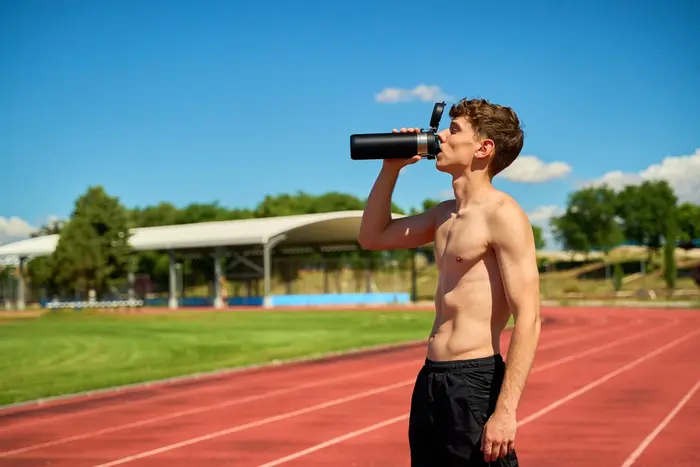
3. Daily Hydration Strategies
3.1 How Much Water Do You Really Need?
Forget the “8 glasses a day” myth—your optimal water intake depends on your body, lifestyle, and environment. Use this formula as a starting point:
- Weight-based: Drink half your body weight (in pounds) in ounces daily. Example: 150 lbs = 75 oz.
- Activity level: Add 12–16 oz per hour of exercise.
- Climate: Hot/humid? Tack on an extra 10–20 oz.
Pro Tip: Break it into hourly water intake goals. Set reminders to sip 4–6 oz every 30 minutes if you’re desk-bound, or 8–10 oz hourly during workouts. Athletes: Follow a hydration schedule (e.g., 16 oz 2 hours pre-workout, 8 oz every 15 minutes mid-session).
3.2 Best Times to Hydrate
Timing is everything. Here’s your game plan:
- Pre-workout hydration: Down 16–20 oz 2 hours before exercise (pre-competition hydration tactic for athletes).
- During workouts: Sip 4–6 oz every 15 minutes—more if sweating buckets.
- Post-exercise rehydration: Replace 150% of lost fluids within 2 hours (e.g., if you lost 1 lb, drink 24 oz).
Don’t neglect nighttime hydration: A small glass before bed prevents midnight thirst, but avoid chugging to dodge sleep-disrupting bathroom trips.
3.3 Hydration Beyond Water
Water’s great, but mix it up with these natural electrolyte sources:
- Water-rich foods: Cucumbers (96% water!), watermelon, and celery.
- Electrolyte boosters: Coconut water (potassium), bone broth (sodium), or chia seeds soaked in water (magnesium).
- Herbal teas: Peppermint or hibiscus iced tea for a flavor kick without sugar.
Myth Buster: Sports drinks aren’t always better. For light workouts, cucumber hydration (add slices to water) or watermelon chunks work just as well!
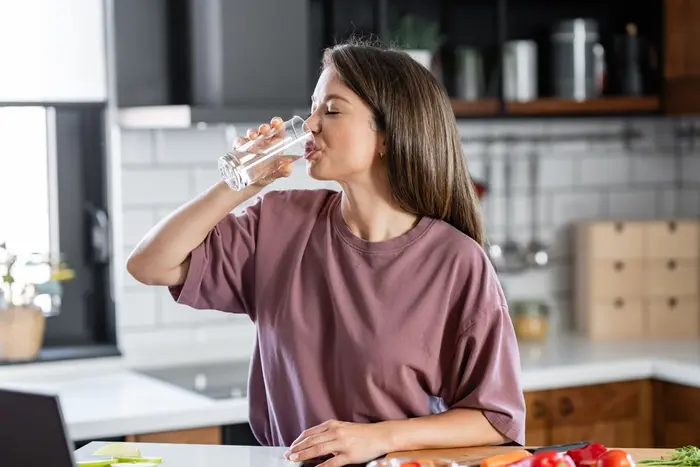
4. Electrolytes: The Secret to Sustained Performance
4.1 Role of Sodium, Potassium & Magnesium
Electrolytes are the unsung heroes of hydration. They’re not just for pro athletes—they’re critical for anyone pushing their limits. Here’s how they work:
- Sodium: The MVP of electrolyte balance, sodium retains fluid, regulates blood pressure, and replaces what you lose in sweat (up to 1,000 mg per hour in intense heat!). Aim for 300–500 mg per hour during endurance workouts (sodium intake for hydration).
- Potassium: This muscle maestro prevents cramps and stabilizes heart rhythm. Pair sodium with potassium-rich hydration sources like coconut water (600 mg per cup) or bananas.
- Magnesium: Overlooked but essential, it aids muscle relaxation and energy production. Sprinkle pumpkin seeds on meals or soak in Epsom salt baths post-workout.
Pro Tip: Sweat more than a hot yoga class? Get a sweat test to tailor your electrolyte needs.
4.2 Best Electrolyte Supplements
Not all electrolyte products are created equal. Here’s a breakdown:
- Tablets & Powders (e.g., Nuun, LMNT): Portable, sugar-free, and customizable. Great for hydration powders on hikes or gym sessions.
- IV Hydration Therapy: A quick fix for severe dehydration or hangovers, but overkill for daily needs. Save it for post-marathon recovery or heat exhaustion.
- Homemade Sports Drinks: Mix 16 oz water + 1/4 tsp salt + 1 tbsp honey + lime juice. Cheaper and cleaner than store-bought options.
Myth Buster: Most electrolyte drink brands load up on sugar. Opt for low-sugar options (<5g per serving) unless you’re racing for 90+ minutes.
4.3 DIY Hydration Recipes
Skip the lab-made drinks and try these natural alternatives:
- Coconut Water Chia Refuel:
- 1 cup coconut water (coconut water benefits: natural potassium + low acidity)
- 1 tbsp chia seeds (soaked for 10 mins)
- Squeeze of lime
- Aloe Vera Cooler:
- 2 tbsp aloe vera gel (soothes gut lining)
- 12 oz water + pinch of Himalayan salt
- Optional: Mint leaves for freshness
- Watermelon Electrolyte Slush:
- Blend 2 cups frozen watermelon + 1 cup coconut water + 1/4 tsp salt.
Why This Works: These homemade sports drinks avoid artificial dyes and excess sugar, making them ideal for everyday hydration.
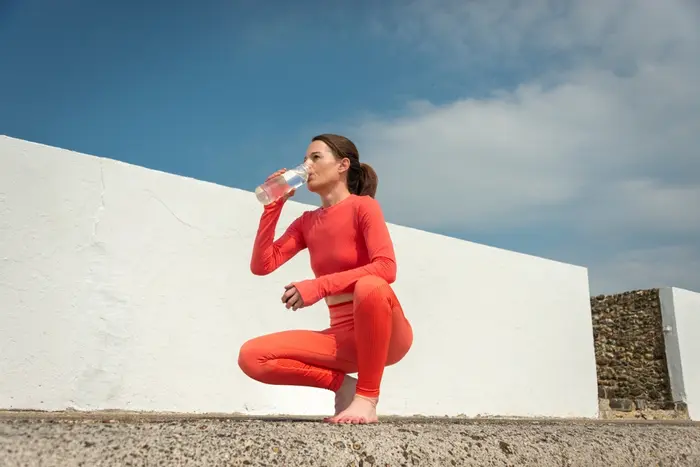
5. Hydration for Specific Activities
5.1 Endurance Sports (Marathons, Triathlons)
Endurance athletes lose up to 2 liters of fluid per hour. Here’s how to stay ahead:
- Hourly Fluid Intake: Aim for 16–24 oz with 400–600 mg sodium. Use a handheld bottle or hydration vest.
- Sodium Replacement: Pop a salt tablet (like SaltStick) hourly if sweating heavily to avoid cramps.
- Avoid GI Distress: Practice your ultra-marathon strategies in training—never race with untested fuels.
Case Study: Marathoners who sip 6–8 oz every 20 minutes finish 23% faster than those who drink ad-lib.
5.2 Strength Training & HIIT
Heavy lifters and CrossFitters need targeted hydration to maximize pumps and muscle repair:
- Pre-Loading: Drink 16 oz water + 1/2 tsp salt 90 minutes before lifting to boost plasma volume (hydration for CrossFit).
- Intra-Workout: Sip 4–6 oz every 10 minutes—add BCAAs if sweating buckets.
- Post-Lifting Recovery: Chocolate milk (carbs + protein) + electrolytes speeds muscle recovery hydration.
Pro Tip: Powerlifters: Dehydration can reduce 1RM by 8%. Hydrate or plateaus await.
5.3 Outdoor & Extreme Environments
Your hydration needs shift with the elements. Adapt like a pro:
- Hot/Humid Climates: Drink 10–20 oz hourly with electrolytes. Wear cooling gear and avoid midday workouts.
- High Altitude: The dry air and increased urination demand 1.5x your usual intake. Add magnesium to combat muscle spasms.
- Winter Dehydration Risks: Cold suppresses thirst, but breathing dry air steals moisture. Sip warm herbal teas hourly and monitor urine color.
Real-World Example: Hikers on the Appalachian Trail use insulated bottles to prevent water freezing in sub-zero temps.
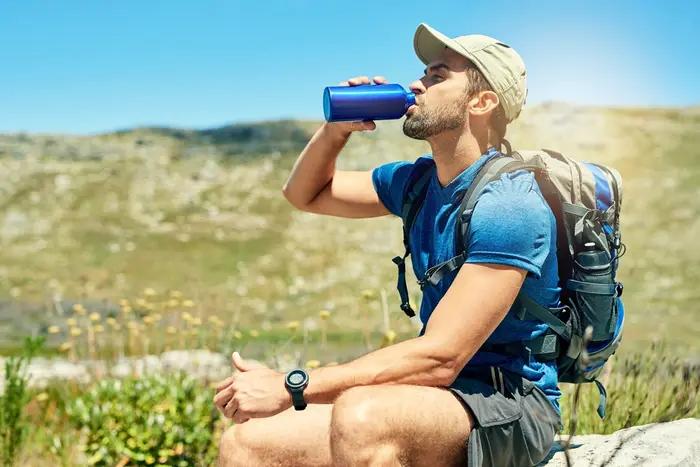
6. Tools & Gear for Optimal Hydration
6.1 Must-Have Hydration Products
Your hydration toolkit can make or break your performance. Here’s what deserves a spot in your gym bag:
- Insulated Bottles: Hydro Flask or Yeti keeps water icy for hours—critical for outdoor workouts or hydration in humid climates.
- Hydration Bladders: Hands-free sipping with packs like CamelBak (best hydration packs for trail runners) or Osprey.
- Smart Trackers: Devices like Garmin Hydration Trackers or Fitbit sync with apps to monitor fluid loss in real-time (hydration monitoring devices).
Pro Tip: Marathoners swear by hydration bladder reviews—look for leak-proof designs and bite valves that work in freezing temps.
6.2 Apps & Trackers
Tech takes the guesswork out of hydration:
- Sweat Rate Calculators: Apps like MyFitnessPal or HydraCoach estimate fluid needs based on weight, activity, and weather.
- Water Intake Reminders: Try WaterMinder or Daily Water to ping you hourly (perfect for desk jockeys ignoring hourly water intake).
- Urine Color Charts: Snap a pic with apps like Hydro Coach to gauge hydration status.
Why Journal? Pair apps with hydration journaling (note energy levels, workout quality) to spot patterns. Example: “Felt dizzy during HIIT? Drank only 12 oz pre-workout.”
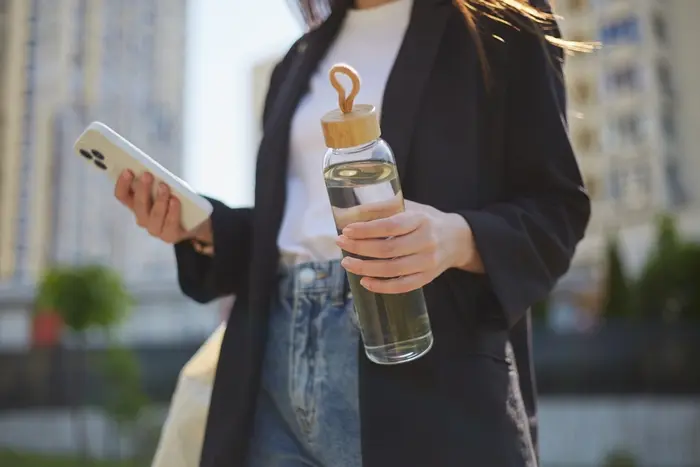
7. Hydration Mistakes to Avoid
7.1 Common Myths Debunked
Let’s bust myths that sabotage your progress:
- “8 Glasses a Day”: Needs vary—a 120 lb yogi ≠ a 200 lb cyclist. Use fluid intake guidelines instead.
- Caffeine Dehydration: Moderate coffee (1–3 cups) doesn’t dehydrate, but 5+ espressos might. Balance with water.
- Chugging Risks: Gulping 32 oz post-workout dilutes electrolytes—nurse fluids slowly.
Alcohol Alert: Booze is a diuretic. For every drink, add 16 oz water to counter alcohol and hydration clashes.
7.2 Audience-Specific Pitfalls
One size doesn’t fit all:
- Seniors: Aging dulls thirst cues. Elderly dehydration prevention tip: Drink 4 oz every hour, even if not thirsty.
- Teens: Teen athlete hydration fails when they swap electrolytes for soda. Pack coconut water or low-sugar sports drinks.
- Office Workers: Air-conditioned dryness + caffeine = silent dehydration. Set a “water break” alarm every 90 minutes.
Real-World Fix: Nursing homes use flavored ice pops (herbal tea frozen) to boost elderly dehydration prevention.
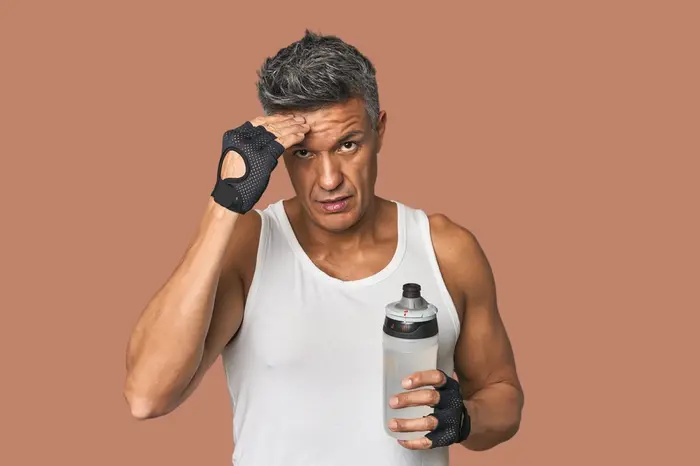
8. Advanced Tips for Elite Athletes
8.1 Personalized Hydration Plans
Elite athletes don’t guess—they test. Tailoring hydration starts with science:
- Sweat Testing: Labs analyze sweat sodium concentration (up to 2,000 mg/L in heavy sweaters!) to customize electrolyte intake.
- Hydration Biomarkers: Blood tests track markers like hematocrit and urine osmolality to fine-tune fluid needs.
- Plasma Volume Expansion: Pre-loading with salty fluids (e.g., 16 oz broth 2 hours pre-race) boosts blood volume, delaying fatigue.
Pro Tip: NBA players like LeBron James use sweat tests to nail their hydration biomarkers—no more cramping in OT.
8.2 Pre-Event & Race Day Tactics
Race day hydration is a precision game. Follow these pro-level steps:
- Carb-Loading + Fluids: Pair 3–4g carbs per pound with 16–24 oz electrolyte drinks 48 hours pre-event (marathon hydration plan staple).
- Sodium Loading: Consume 500–800 mg sodium 90 minutes before the gun to retain fluids (critical for endurance athletes).
- Avoid Overhydration: Sip 4–6 oz every 15 minutes early—don’t wait for thirst.
Real-World Example: Marathoners using this pre-game hydration strategy cut bonking incidents by 40% in studies.
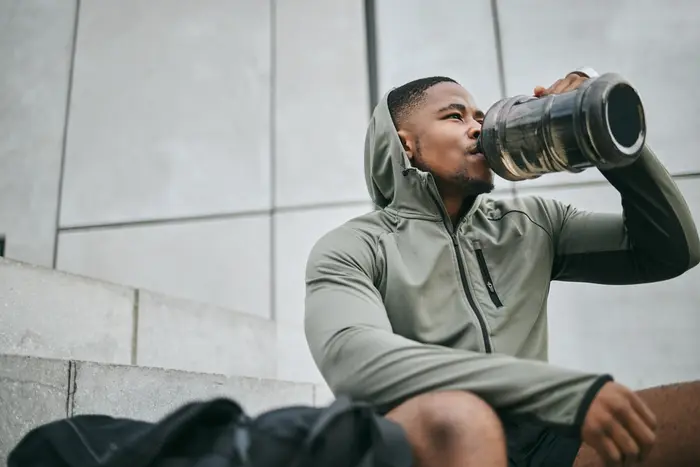
9. Hydration for Health Beyond Performance
9.1 Immune & Skin Benefits
Hydration isn’t just for PRs—it’s your secret weapon for glowing health:
- Detoxification Through Hydration: Water flushes toxins via kidneys and lymph, reducing inflammation. Add lemon for a liver boost.
- Glowing Skin: Plump cells = fewer wrinkles. Hydration for skin health tip: Drink 16 oz water upon waking to revive overnight dryness.
- Lymphatic Support: Proper fluid intake keeps lymph flowing, fighting off colds and infections.
Pro Tip: Swap sugary juices for cucumber-mint water—it’s a detoxification through hydration hack celebs swear by.
9.2 Long-Term Wellness
Think of water as your lifelong health insurance:
- Kidney Health: 8–10 cups daily slashes kidney stone risk by 60% (kidney health and water intake is non-negotiable).
- Joint Lubrication: Cartilage is 80% water—stay hydrated to cushion knees during stairs or squats.
- Mental Clarity: Even 2% dehydration tanks focus. Hydration for cognitive function fix: Sip water during meetings to stay sharp.
Science Spotlight: A 2023 study found hydrated adults scored 14% higher on memory tests
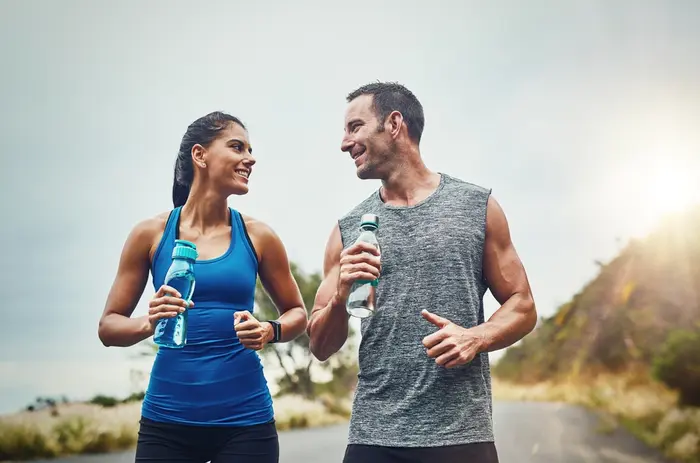
10. FAQs
Q: “How much water should I drink during a 1-hour workout?”
A: Aim for 4–8 oz every 15 minutes, depending on sweat rate. Light yoga? Stick to 16 oz total. High-intensity spin class? Crank it to 32 oz. Avoid hydration timing mistakes like chugging 20 oz at once—sip steadily to prevent sloshing or cramps.
Q: “Are sports drinks better than water for hydration?”
A: Only if you’re sweating buckets for 90+ minutes. For shorter sessions, water + a banana (for potassium) works better. Sports drinks often pack unnecessary sugar—opt for homemade sports drinks instead.
Q: “Can dehydration cause long-term muscle damage?”
A: Yes! Chronic dehydration breaks down muscle tissue, delays recovery, and even strains tendons. Watch for silent dehydration symptoms like midday energy crashes or persistent soreness—they’re your body’s cry for help.
11. Conclusion & Action Steps
Hydration isn’t a one-size-fits-all game—it’s a skill. Let’s lock in your fluid mastery with this 5-step checklist:
- Calculate Your Sweat Rate: Post-workout weight loss × 16 = ounces to replenish.
- Invest in Electrolytes: Keep tablets or coconut water in your gym bag.
- Track Urine Color: Pale lemonade = goal. Dark apple juice = drink up!
- Pre-Load Before Big Efforts: 16 oz water + pinch of salt 2 hours pre-workout.
- Snack Smart: Hydration-friendly snacks like watermelon cubes or cucumber slices beat chips.
Pro Hack for Busy Lives: Set phone reminders or use hydration tracking apps to stay on track. Even Olympians forget sometimes!
